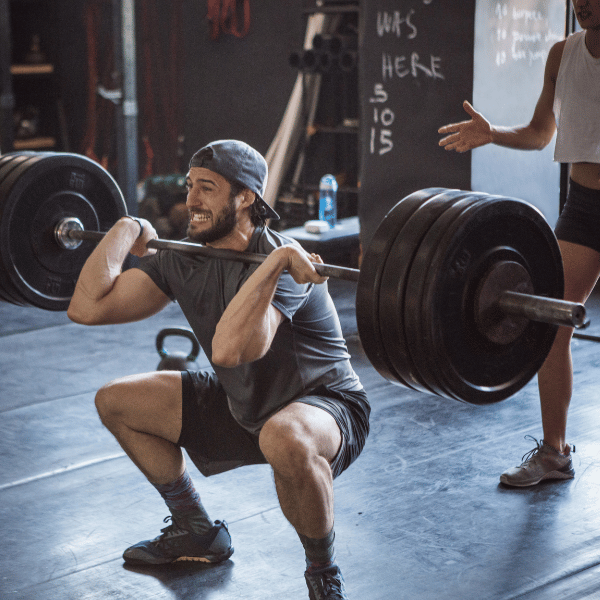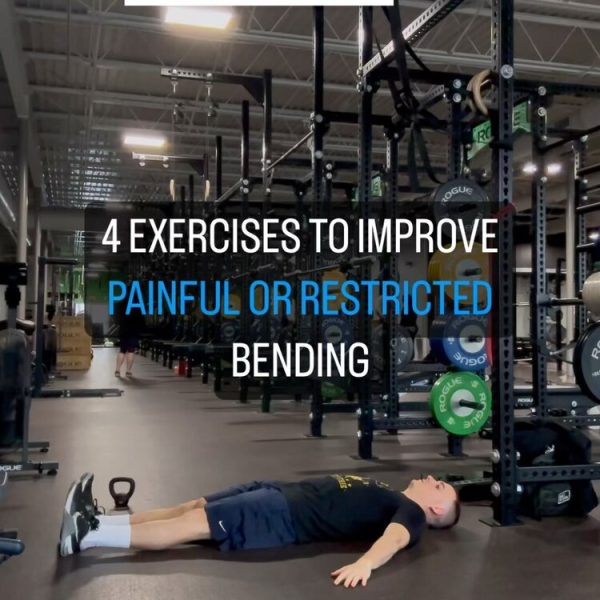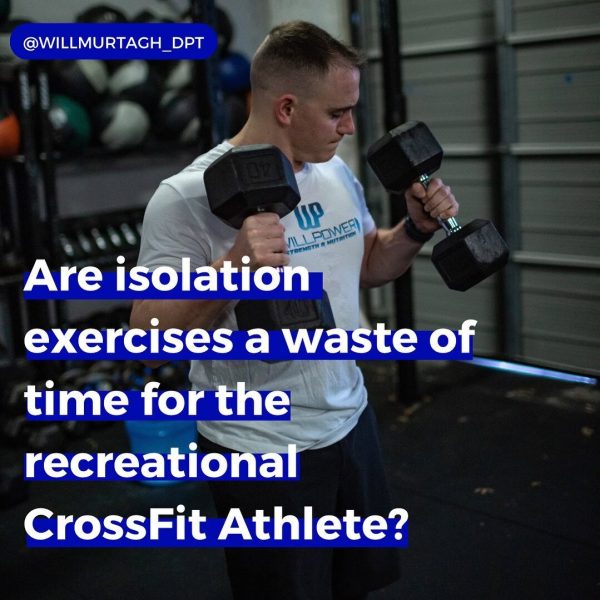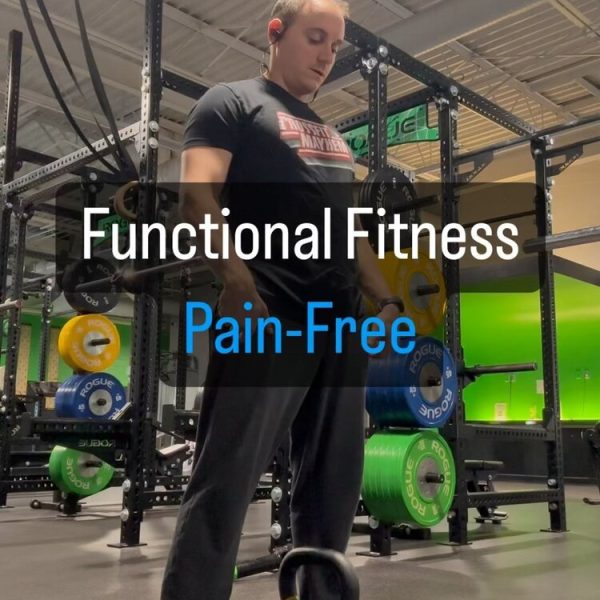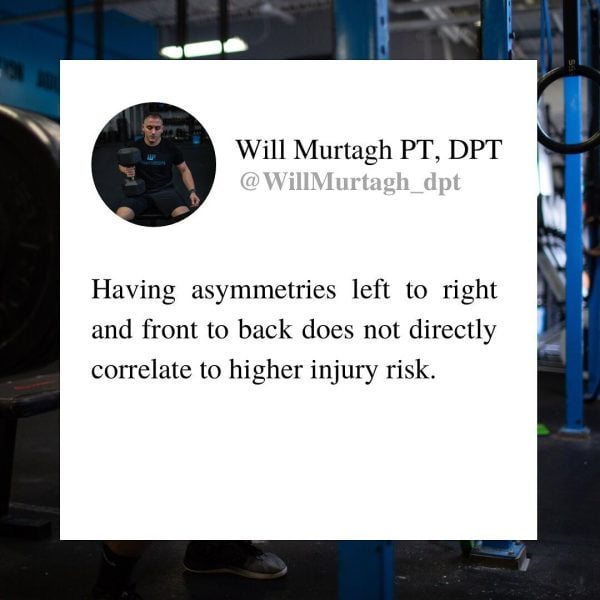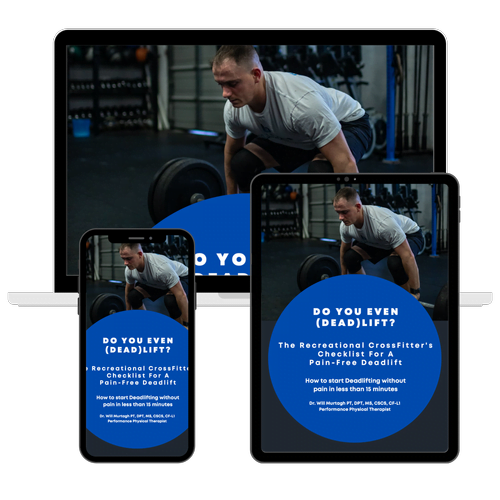Dr. Will Murtagh is a performance physical therapist and writer who helps Fitness Athletes elevate their fitness and train pain-free.
Did you know that upwards of 20% of athletes whose sport requires jumping develop some patellar tendinopathy? (1) This is why finding the right patellar tendon rehab protocol for you is essential.
Patellar tendonitis/tendinosis is a prevalent condition that affects the anterior (front) of the knee just below the knee cap. (2) It can become increasingly painful with squatting, lunging, and landing. (2) As well as during everyday activities such as standing from a chair or ascending stairs.
During my 12 years as a strength & conditioning coach and now Performance Physical Therapist, I have seen countless athletes present with patellar tendinopathy and helped them to rehab back to full sports participation using a “training” approach. I do so because of my trials with patellar tendinopathy and the strategies I used to rehab my knee.
The typical balance exercises and straight leg raises wouldn’t work for me. I was an athlete who wanted to squat, lunge, jump, and train hard. Thus, I took the same approach to my treatment with my athletes and blended my rehab with my training with my current clients inside my 1:1 Pain-Free Performance Program.
In this article, we will dive into patellar tendon pain and uncover the best ways to treat it so you can get back to training hard.
Remember: this post is for informational purposes only and may not be the best fit for you and your personal situation. It shall not be construed as medical advice. The information and education provided here is not intended or implied to supplement or replace professional medical treatment, advice, and/or diagnosis. Always check with your own physician or medical professional before trying or implementing any information read here.
What Is The Best Patellar Tendon Rehab Protocol?
There are many different variations of patellar tendon rehabilitation protocols available today. Since athletes of different sports are all at risk of developing knee pain related to patellar tendinopathy, it is essential to work with a physical therapist who understands your sport’s demands.
As a previous strength & conditioning coach and now performance physical therapist, I have seen what is most effective for treating this condition in athletes and my history of patellar tendon issues over the years so that you can effectively rid yourself of the condition once and for all.
You may also be interested in my free weekly newsletter, which can give you the tools to eliminate your knee pain and get you back to pain-free training.
Click HERE to get back to training pain-free in less then five minutes per day.
Understanding Patellar Tendonitis
Patellar Tendonitis, commonly called Jumper’s Knee, is a common musculoskeletal disorder that impacts the tendon connecting the kneecap (patella) to the shinbone (tibia). (2) This condition arises due to various contributing factors and is primarily observed in athletes engaging in repetitive jumping activities like basketball, volleyball, or running.
Causes of Patellar Tendonitis
Several factors contribute to the development of Patellar Tendonitis.
Overuse: Continuous jumping or running places repetitive stress on the patellar tendon, resulting in inflammation and micro-tears.
Muscle Imbalance: Weakness or tightness in the quadriceps muscles can lead to unnecessary forces on the patellar tendon during physical activities. (2)
Improper Biomechanics: Poor jumping or landing techniques increase stress on the patellar tendon, predisposing it to injury. (2)
Training Errors: Sudden increases in training intensity, frequency, or duration without adequate rest can increase the risk of developing tendonitis. (2)
Symptoms and Diagnosis
Common symptoms of Patellar Tendonitis include pain, swelling, stiffness, and tenderness around the front of the knee, particularly during activities involving jumping or bending the knee. Diagnosis typically involves a comprehensive physical examination, including a review of medical history, orthopedic tests, and possibly imaging studies such as ultrasound or MRI to confirm the diagnosis.
Treatment Strategies
Treatment for Patellar Tendonitis focuses on alleviating symptoms and promoting healing.
Rest and Activity Modification: Initial management involves resting the affected knee and avoiding activities that worsen symptoms.
Ice Therapy: Applying ice to the affected can help reduce pain.
Physical Therapy: Stretching and strengthening exercises targeting the quadriceps, hamstrings, and calf muscles to increase flexibility and range of motion are essential for correcting muscle imbalances and improving biomechanics. (2)
Bracing or Taping: Supportive devices like patellar tendon straps or kinesiology tape may relieve symptoms during physical activity.
Medication: Non-steroidal anti-inflammatory drugs (NSAIDs) may be prescribed to manage pain and inflammation.
Rehabilitation and Prevention
Gradual Progression: Rehabilitation programs focus on gradually increasing strength, flexibility, and proprioception to restore optimal function and prevent future injury. (2)
Preventive Measures: Incorporating proper warm-up and cool-down routines, maintaining flexibility and strength through regular exercises, and paying attention to proper technique and biomechanics during activities are crucial in preventing Patellar Tendonitis. (3)
Why Are Athletes Prone to Patellar Tendonitis?
Patellar Tendonitis, a common affliction among athletes, particularly those engaged in sports involving repetitive jumping, running, or squatting movements, arises from various factors inherent to their activities.
Overloading the Patellar Tendon through Sport-Specific Movements
Jumping Movements: Sports like basketball, volleyball, or track and field events often require athletes to perform repetitive jumping actions. Each landing generates significant force through the patellar tendon, leading to wear and tear over time.
Running and Sprinting: Sprinting and long-distance running also contribute to patellar tendon stress. The repetitive impact from foot strikes, especially during accelerations or decelerations, can strain the tendon.
Squatting and Weightlifting: Sports like powerlifting or Olympic weightlifting involve deep squats, placing considerable tension on the patellar tendon. Improper form or excessive loads exacerbate this strain.
Risk Factors Amplifying Patellar Tendonitis Risk
Improper Form: Athletes with poor biomechanics, such as improper landing techniques or squatting mechanics, subject the patellar tendon to abnormal stresses. Excessive knee valgus or inward collapse during landing can overload the tendon. (2)
High Training Volume: Intensive training regimens, characterized by frequent and intense workouts with inadequate recovery periods, heighten the risk of tendon overuse. Persistent stress without sufficient rest can lead to tendon breakdown and inflammation.
Weak Supporting Muscles: Weakness or imbalances in the quadriceps, hamstrings, or calf muscles diminish the ability of these muscles to stabilize the knee joint during dynamic movements. This increases strain on the patellar tendon, making it more susceptible to injury. (2)
Potential Equipment or Footwear Issues
Footwear Selection: Inappropriate footwear lacking sufficient cushioning or support can exacerbate patellar tendon stress. Shoes with inadequate shock absorption fail to mitigate the impact forces transmitted through the lower limb during running or jumping.
Equipment Deficiencies: Using worn-out or improperly sized equipment, such as running shoes with deteriorated cushioning or ill-fitting weightlifting, may alter biomechanics and increase tendon strain. Inadequate gear selection can also lead to compensatory movements that overload the patellar tendon.
Prevention Strategies for Athletes to Avoid Patellar Tendonitis
Preventing Patellar Tendonitis among athletes involves implementing a comprehensive approach that addresses biomechanics, muscle conditioning, warm-up routines, and proper equipment selection. Here are actionable tips to help athletes minimize their risk of developing this debilitating condition.
Proper Form and Technique Coaching
Athletes should receive instruction from qualified coaches or trainers on proper form and technique for sport-specific movements, particularly those involving jumping, landing, and squatting. Emphasizing correct alignment, balance, and movement patterns reduces the strain on the patellar tendon and promotes efficient muscle recruitment.
Warm-Up and Cool-Down Routines
Before engaging in physical activity, athletes should perform dynamic warm-up routines, including movements targeting the lower body, such as leg swings, lunges, and high knees. These exercises help increase muscle blood flow, improve flexibility, and prepare the body for training demands. Similarly, incorporating static stretches during the cool-down phase helps prevent muscle tightness and reduce the risk of injury.
Strengthening Exercises
A comprehensive strength training program focusing on the quadriceps, hamstrings, and calf muscles is essential for maintaining optimal lower limb function and preventing imbalances that can contribute to Patellar Tendonitis. (3) Exercises such as squats, lunges, leg presses, calf raises, and hamstring curls help improve muscle strength, endurance, and coordination, thereby reducing the strain on the patellar tendon during physical activity. (3)
Gradual Progression of Exercise Intensity and Volume
Athletes should gradually increase their training sessions’ intensity, duration, and frequency to allow the body to adapt and minimize the risk of overuse injuries like Patellar Tendonitis. (3) Sudden training volume or intensity spikes should be avoided, as they can overwhelm the tendon’s capacity to withstand stress. (2) Implementing periodization principles and incorporating rest days into training schedules are crucial for preventing overtraining and promoting recovery.
Proper Footwear Selection for Training
Choosing appropriate footwear tailored to the specific demands of training activities is paramount in preventing Patellar Tendonitis. Athletes should opt for shoes with adequate cushioning, arch support, and stability features to absorb impact forces and provide optimal shock absorption during running, jumping, and weightlifting. Regularly replacing worn-out footwear is essential to maintain supportive features and prevent biomechanical issues that may contribute to tendon injury. (3)
Patellar Tendon Rehab Protocol For Athletes
Patellar Tendonitis is common among athletes. It requires a structured rehabilitation program to alleviate symptoms, promote healing, and facilitate a safe return to training. Here’s a comprehensive treatment plan tailored specifically for athletes.
Rest and Activity Modification Recommendations
Immediate Rest: Athletes should temporarily cease activities that exacerbate symptoms, such as jumping, squatting, or high-impact exercises.
Modify Workouts: Substitute high-impact exercises with low-impact alternatives to reduce stress on the patellar tendon. Focus on activities that minimize knee flexion and avoid excessive loading, such as swimming or stationary cycling.
Pain Management Techniques
Isometric Knee Extensions: Isometric knee extensions with a relatively heavy load, at roughly sixty degrees of knee flexion, and for about forty-five seconds for several sets can produce an analgesic effect to allow for training. (3)
Ice Application: Apply ice to the affected knee to reduce pain. Ensure a cloth or towel is placed over the ice pack to prevent irritation. (3)
Massage: Use gentle cross-friction massage to reduce tenderness along the tendon in the surrounding muscles to reduce tone. (3)
Stretching and Strengthening Exercises
Patellar Tendon Stretch: Perform gentle static stretches targeting the quadriceps and hamstrings to improve flexibility and alleviate tension on the patellar tendon. (3) Hold each stretch for 30 seconds and repeat 3-4 times.
Eccentric Strengthening: Incorporate eccentric exercises, such as decline squats or eccentric knee extensions, to load the patellar tendon and promote tendon remodeling. Gradually increase resistance and repetitions as tolerated. (2)
Hip and Core Strengthening: Strengthening the hip and core muscles, including the glutes, hip abductors, and abdominals, helps improve lower limb alignment and stability and reduces strain on the patellar tendon during functional movements. (3)
Gradual Return to Training with Proper Progressions
Phase 1: Pain Management and Mobility (Weeks 1-2): Emphasize reducing pain and inflammation through rest, ice therapy, and gentle stretching. Incorporate low-impact activities like swimming or cycling for cardiovascular fitness. (3)
Phase 2: Strengthening and Stability (Weeks 3-6): Progress to targeted strengthening exercises for the quadriceps, hamstrings, and hip muscles. Introduce resistance training with light weights and resistance bands, emphasizing proper form, control, and progressive loading. (3)
Phase 3: Functional Rehabilitation (Weeks 7-10): Gradually reintroduce sport-specific exercises, starting with modified movements and lower intensity. Emphasize proper technique and form, gradually increasing intensity and volume as symptoms improve. (3)
Final Thoughts On The Best Patellar Tendon Rehab Protocol
Patellar Tendonitis can be debilitating for athletes, but it is not insurmountable. By implementing proactive prevention strategies, such as proper form and technique coaching, dynamic warm-up routines, and targeted strengthening exercises, athletes can significantly reduce their risk of developing this injury.
Moreover, early intervention and proper rehabilitation are essential for effectively managing Patellar Tendonitis when it does occur. Structured rehabilitation programs focused on pain management, mobility restoration, and gradual return to activity provide athletes with the tools to overcome this challenge and get back to doing what they love.
Remember, your long-term joint health and athletic success are worth prioritizing. If you’re experiencing knee pain or suspect you may have Patellar Tendonitis, don’t hesitate to seek professional guidance.
I invite you to book a free consultation for my 1:1 Pain-Free Performance Program. I’ll work with you individually to develop a personalized plan to help you train hard and reach your fitness goals without joint pain. With dedication, proper care, and the right support, you can overcome Patellar Tendonitis and continue to excel in your athletic pursuits.
References:
1. Nutarelli, S., da Lodi, C. M. T., Cook, J. L., Deabate, L., & Filardo, G. (2023). Epidemiology of Patellar Tendinopathy in Athletes and the General Population: A Systematic Review and Meta-analysis. Orthopaedic journal of sports medicine, 11(6), 23259671231173659. https://doi.org/10.1177/23259671231173659
2. Figueroa, D., Figueroa, F., & Calvo, R. (2016). Patellar Tendinopathy: Diagnosis and Treatment. The Journal of the American Academy of Orthopaedic Surgeons, 24(12), e184–e192. https://doi.org/10.5435/JAAOS-D-15-007031.
3. Muaidi Q. I. (2020). Rehabilitation of patellar tendinopathy. Journal of musculoskeletal & neuronal interactions, 20(4), 535–540. https://www.ncbi.nlm.nih.gov/pmc/articles/PMC7716685/

